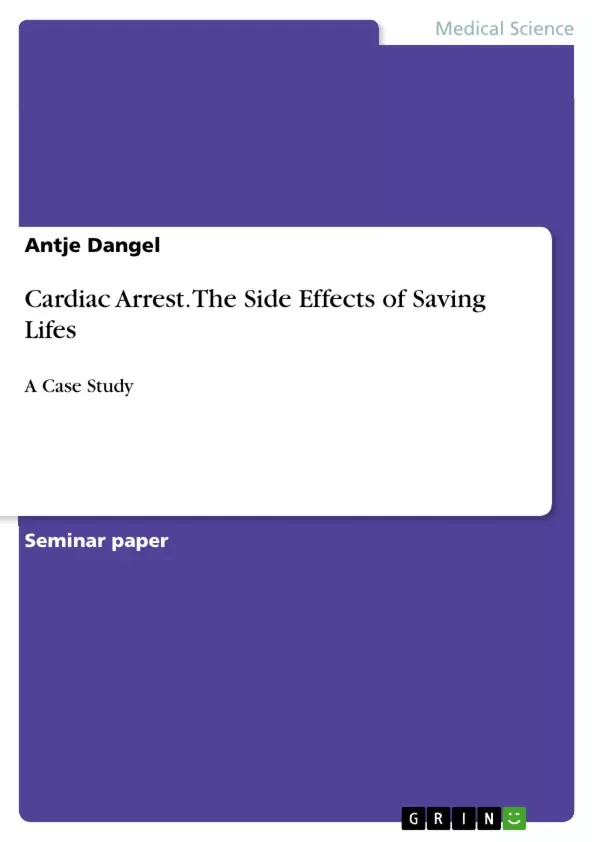Currently, heart disease remains the leading cause of death while cardiac arrest is one of the most devastating conditions patients and their families have to face. Despite all efforts to explain management of cardiac arrest and implementation of advanced cardiovascular life support (ACLS), survival rates post cardiac arrest remains at 23.9 % in adults and 40.2% in children (AHA, 2012). Nurses undergo extensive ACLS training every two years. While algorithms, administration of emergency drugs, and procedures seem to be followed appropriately, rationales of the latter are often not well understood. In this paper pharmacokinetics and pharmacodynamics, adverse effects of ACLS drugs, drug-drug interactions of intervention drugs, and anticipated long-term adverse effects post cardiac arrest will be discussed. In the case study of JG, the patient went into cardiac arrest on the way to the hospital and he was pronounced after a full code had been performed for three hours. The cause of his cardiac arrest in regards to heart rhythm is unclear and no medical history is available.
Inhaltsverzeichnis (Table of Contents)
- Introduction
- ACLS Guidelines
- Clinical Pharmacology of Emergency Drugs
- Vasopressin versus Epinephrine - Amiodarone versus Lidocaine
- Pharmacodynamics
- Adverse Reactions
- Disease Interaction According to the FDA
- Drug-Drug Interactions
- Review of Literature
- Consideration of Other Commonly Prescribed Cardiac Drugs
- Conclusion
Zielsetzung und Themenschwerpunkte (Objectives and Key Themes)
This paper aims to examine the pharmacodynamics and pharmacokinetics, adverse effects, drug-drug interactions, and long-term consequences of ACLS drugs. The case study of JG, who experienced cardiac arrest, highlights the critical role of ACLS medications in managing life-threatening situations.
- Pharmacological management of cardiac arrest
- Pharmacodynamics and pharmacokinetics of ACLS drugs
- Adverse reactions and disease interactions of ACLS drugs
- Drug-drug interactions of ACLS drugs
- Long-term consequences of ACLS drug administration
Zusammenfassung der Kapitel (Chapter Summaries)
The introduction provides a background on cardiac arrest and its prevalence, emphasizing the importance of ACLS training and the need for a deeper understanding of the rationale behind ACLS drug administration. The ACLS Guidelines chapter outlines the recommended procedures for cardiac arrest, including CPR, defibrillation, and the administration of vasopressors and anti-arrhythmic drugs.
The Clinical Pharmacology of Emergency Drugs chapter delves into the pharmacodynamics and pharmacokinetics of epinephrine, vasopressin, amiodarone, and lidocaine, exploring their mechanisms of action, adverse effects, and disease interactions. The section on Vasopressin versus Epinephrine - Amiodarone versus Lidocaine further examines the pharmacodynamics of these drugs, highlighting their individual effects on the cardiovascular system.
Schlüsselwörter (Keywords)
Cardiac arrest, ACLS, emergency drugs, epinephrine, vasopressin, amiodarone, lidocaine, pharmacodynamics, pharmacokinetics, adverse reactions, disease interactions, drug-drug interactions, long-term consequences, case study.
- Citar trabajo
- Antje Dangel (Autor), 2014, Cardiac Arrest. The Side Effects of Saving Lifes, Múnich, GRIN Verlag, https://www.grin.com/document/303791



